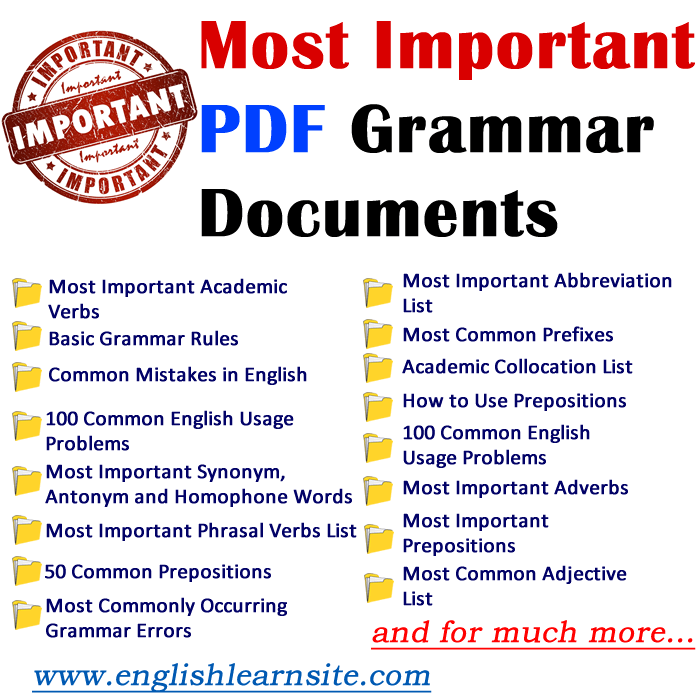Common Phrasal Verbs List Pdf
Download free pdf english books from Phrasal verbs A ot Z pdf at EasyPaceLearning. Fill in the blanks with an appropriate phrasal verb. When I was talking to James, Susie broke in on our conversation.
Connections, which are people you have positive professional relationships with, are extremely important in business. Connections are equally important for business English—but now I’m talking about a completely different type of. Using English for business can be very easy. In, you can.
But sometimes, when you mix them with other words. When you put verbs together with other words (for example, with prepositions), it can become a whole new verb with a meaning that is different from the original verb on its own. The phrasal verbs for the verb “look” are good examples of how the meaning of a phrasal verb can be different from the original verb.
The girl is looking into the room. “Look into” is a phrasal verb using the verb “look.” It is often used in discussions of business. In this case, the meaning of the sentence above is very simple.
Common Phrasal Verbs List With Examples And Meaning Pdf
It has a very literal meaning. The girl is looking, as in “seeing,” and she is looking into the room, or looking inside the room. “Look into,” however, also means to check information about something, or to investigate something. We can make a sentence like the one above but with the phrasal verb meaning. The girl is looking into the problem.
In the above sentence, the girl is trying to find out more about a problem. There are many other phrasal verbs made with the word “look.” For example: The boy is looking after his little sister.
The words “look” and “after” together form a phrasal verb that means to “take care of” or even “raise” a child. In business situations, you might hear people say things like: My boss is always looking after his clients. You will find a list of some more useful phrasal verbs that are used in business English below.

Advice for Using Phrasal Verbs This is the most important thing to know about phrasal verbs: The meaning of the phrasal verb might not be the same as the meaning of the main verb. It is a good idea to think of every phrasal verb as a completely different verb from the main verb it uses. Using the example above, you can think of “look,” “look into” and “look after” as three completely different verbs. The wonderful thing about phrasal verbs is that sometimes they are the exact, perfect word you need in a sentence. They give you more ways to express yourself. For example, the word “look into” is more general and less formal than words such as “research” and “investigate.” You can use it in more casual situations.
It can also be used in a lot of different situations than it synonyms, so that makes it a great phrasal verb to remember and use. Another good example of how phrasal verbs can help your business English is the difference between “looking at” paperwork and “looking through” paperwork. Both of these phrasal verbs involve “looking.” However, each one is a little different. Looking through paperwork means to carefully read through the words of the documents and all the details.
Looking at the paperwork is much lighter, and means that you are not reading the paperwork as carefully. Looking at papers means just glancing (looking very quickly) at the title and paper itself. Different Types of Phrasal Verbs There are two good ways to divide phrasal verbs. One way is based on if the phrasal verb needs an object or not. The grammatical terms for these are transitive (verbs that need an object) and intransitive (verbs that don’t need an object).





